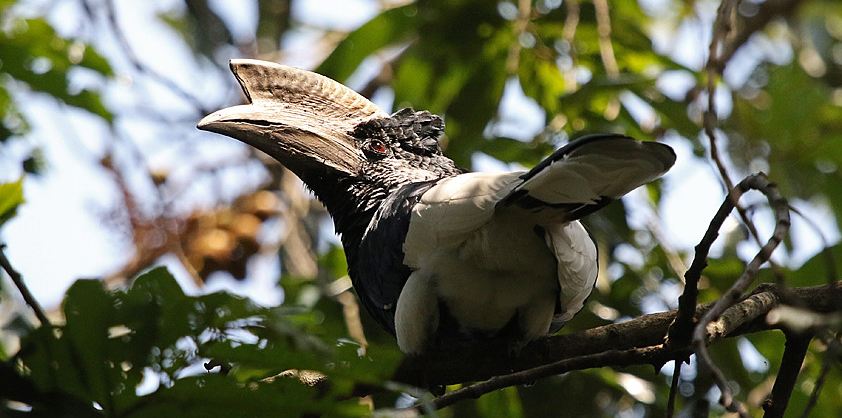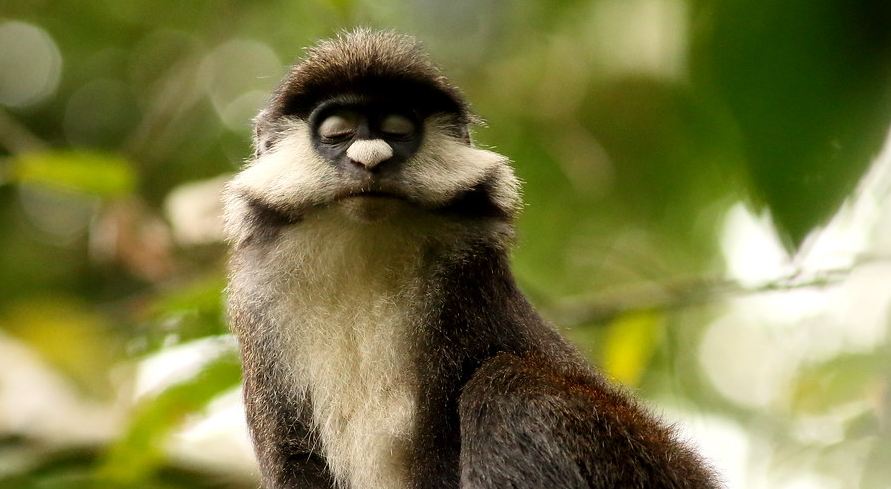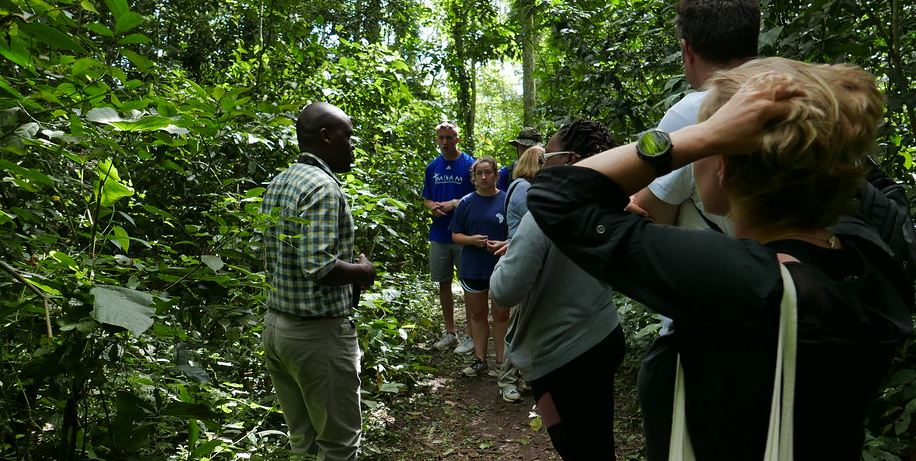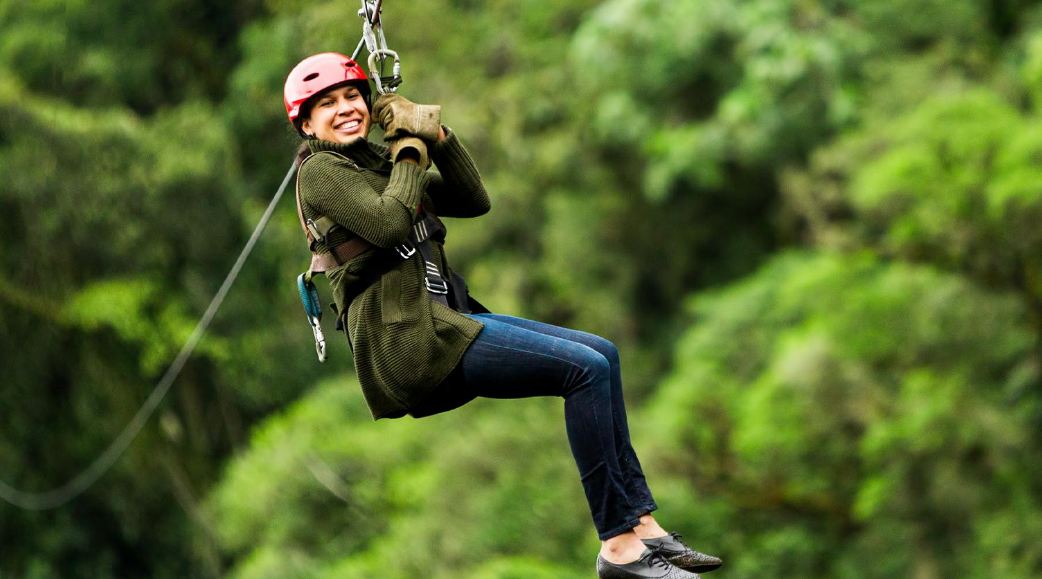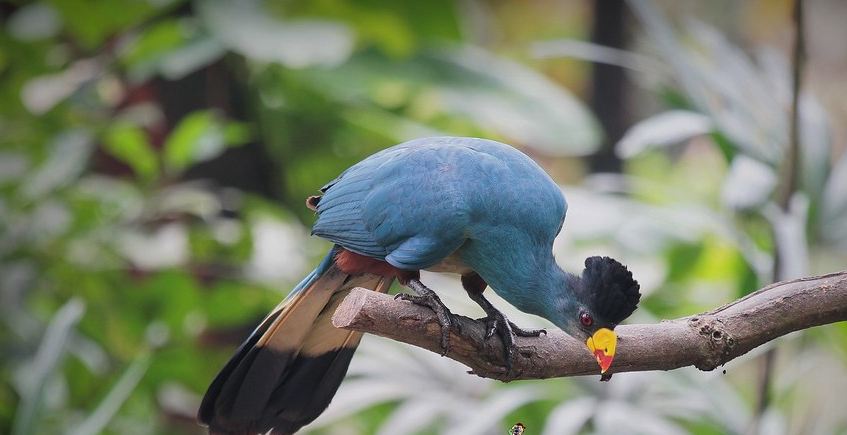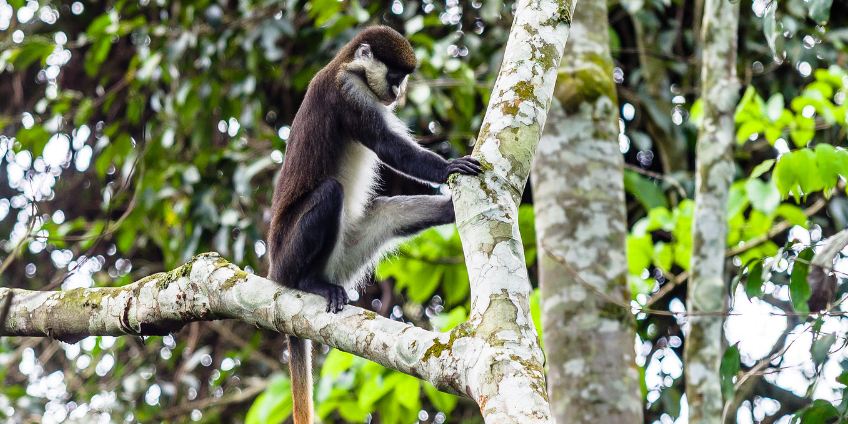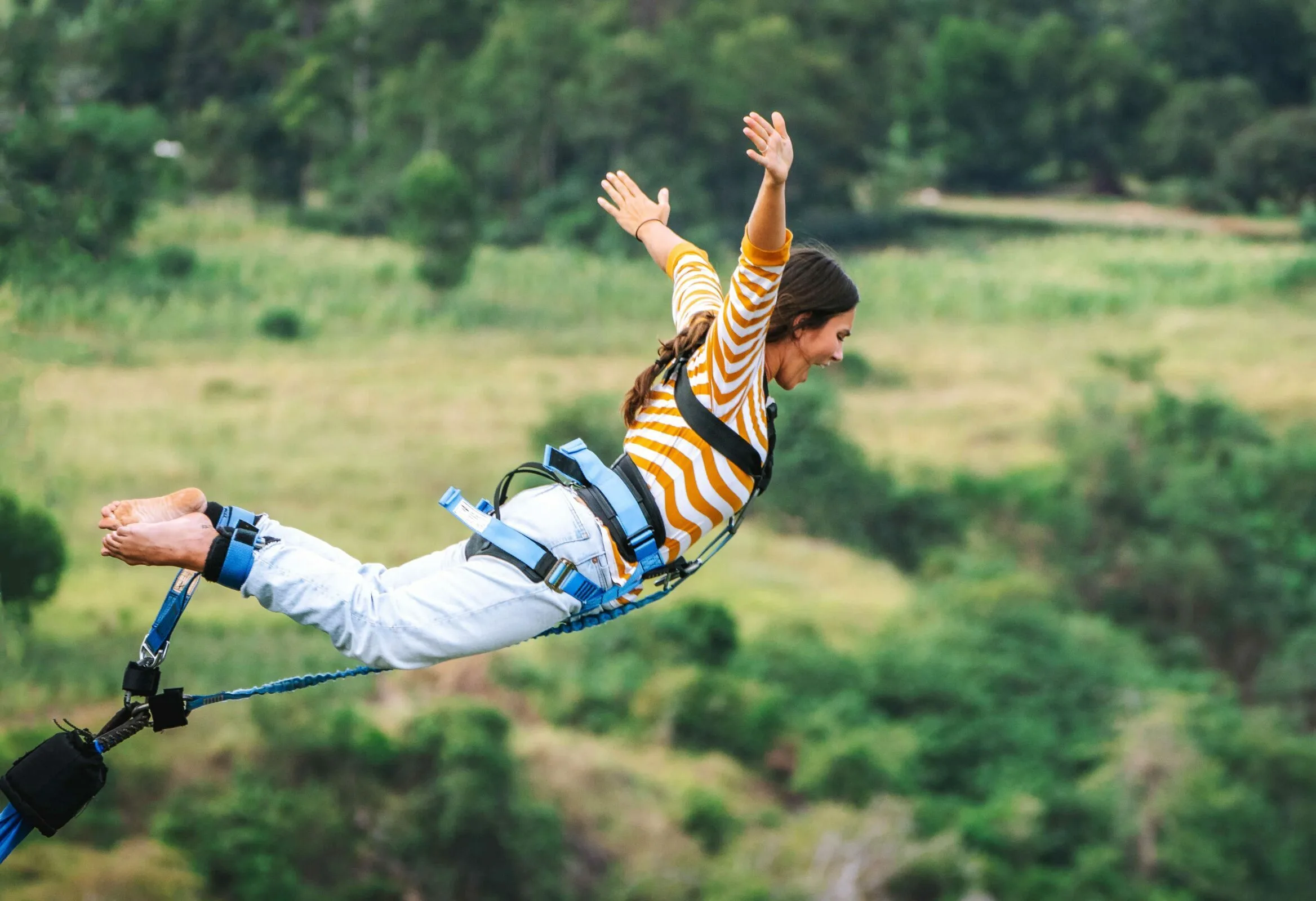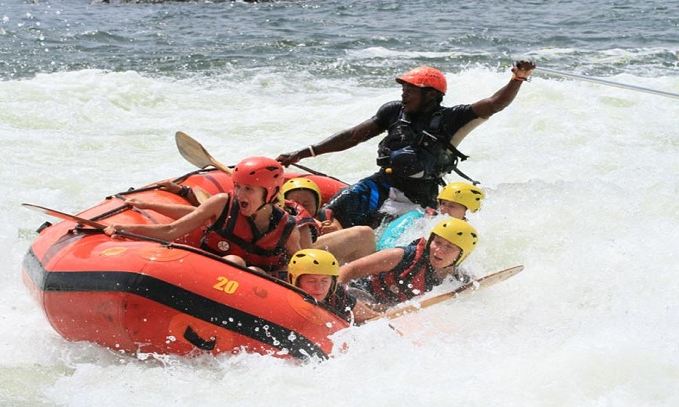Table of Contents
ToggleMabira Forest derives its name from the local Luganda word “amabira” which means “a big forest”. Mabira Forest Reserve is the largest natural forest in the central part of Uganda.
The forest covers an area of approximately 300 square kilometers. It supports plenty of life including over 300 bird species, 300 tree species, 200 butterfly species, 90 species of months and 40 species of small mammals. Mabira Forest is located north of Lake Victoria.
It is situated along the Kampala-Jinja highway in Buikwe District, between Lugazi and Jinja. The forest is about 20 minutes from Sezibwa Falls, 1 hour drive from the capital Kampala City and 30 minutes from Jinja City and the source of the Nile River farther east.
It is very easy to reach from Kampala and is a destination perfect for nature lovers looking for a short trip in Uganda to experience the African jungle and get up-close with nature.
Mabira Forest: History and Culture
Mabira was declared a forest reserve in 1932. This forest has a significant value when it comes to the traditions of the Buganda Kingdom. The Baganda people believe that Mabira is home to their traditional ancestor that brings rains and food.
They also believe that the forest acts a guard for the Kingdom in case any hurricane coming from the eastern part can be stopped by the forest not to reach the palace of their Kabaka (king) on Mengo Hill. In 2007, the Sugar Corporation of Uganda Limited (SCOUL) publicized plans to clear about 33 % of the Mabira Forest land, for sugarcane plantations, and had proposed to the government of Uganda to de-gazette this land and transfer it to SCOUL.
The President of Uganda and his cabinet supported this plan. But the deforestation plans were disputed. While environmental activists feared the loss of hundreds of rare species, increased soil erosion, the destruction of livelihoods of local people and negative impacts on water balance and regional climate, supporters hoped for the creation of jobs.
A cabinet paper indicated that the plan would generate 3,500 jobs and contribute USh 11.5 billion to the Uganda treasury. The Kabaka (King) of Buganda Kingdom also opposed the deforestation plan and offered alternative land for sugarcane production.
At least three people were killed during a protest of about 1,000 for the protection of the Mabira. There were also riots against Asians, since SCOUL is Indian-owned.
SCOUL sugarcane plantations were burnt, and massages calling for the boycott of SCOUL’s Lugazi sugar circulated. Ugandan president defended the deforestation plans, saying that he shall “not be deterred by people who don’t see where the future of Africa lies”.
According to him, the Save Mabira activists “don’t understand that the future of all countries lies in processing”. In May 2007, the Ugandan environmental minister announced that the deforestation plans were suspended.
What to Do in Mabira Forest Reserve?
There is a variety of interesting thing to do in Mabira forest, including forest walks, bird watching, zipping; mountain biking, mangabey monkey tracking, picnic and camping.
1. Nature Walk In Mabira Forest
Mabira has a network of well-maintained trails where you can do a nature walk and discover the amazing nature in this beautiful rainforest jungle.
During Mabira forest nature walk, you will experience the tranquility as you hike under the cool canopies in what can be termed as “forest bathing” or “taking in the forest atmosphere”. Do you know forest bathing is said to significantly enhance immunity?
On your walk you will see a variety of wildlife species including different types of monkeys, beautiful butterflies, months, squirrels, and birds. You will also see different types of trees and shrubs. You will also learn about some special trees like those possessing medicinal properties such as Warbhugia Ugandenesis that has anti-viral properties and is one of the ingredients Prof. Patrick Ogwang used in inventing a popular local Covid 19 herbal therapeutic concoction called Covidex.
2. Ziplinning in Mabira Forest
Ziplinning in Mabira Forest is an adventurous fun activity that offers beautiful views of nature and an opportunity to bond with your family or friends. It also offers a variety of health benefits too. As you soar through the air and soak in scenic views of Mabira Forest, you are actually doing your body and mind a favor.
A Ziplinning adventure is an opportunity to release stress by getting you out of your comfort zone and giving you a bit of an adrenaline rush. It also helps you burn calories and overcome your own fears, especially if you are afraid of heights. Mabira Forest Zipline is suspended about 2000 meters off the ground.
The zip-line is built and operated to the international safety standards, with imported climbing gears and art high ropes from USA. You are also led to pass through ancient trees by experienced Sky guides across a network of five zip-lines that stretches 250m across River Musamya. High up in the canopy, you can enjoy a view of the forest layers, monkeys, birds and the roaring griffin falls.
Zip-line activities in Mabira Forest are done from 8am in the morning to 1pm and from 2pm to 6pm daily. If you are looking for a Zipline adventure, look no further than Tulambule. We offer a variety of tour packages that includes Mabira Forest Ziplinning.
4. Bird Watching in Mabira Forest
With over 300 bird species, Mabira Forest is a top destination for Uganda birding tours. Being located near Kampala you can easily visit the forest for a day or two of birding, or have it as one of your first birding spots on your multiday birding safari in Uganda.
For a multiday birding tour you can include Mabira Forest as the second birding destination on your itinerary right after the Mabamba Swamp near Entebbe where you will have ticked off the Shoebill stork and other wetland specials. While conditions for photography can be tricky (as with all forest birding), a trip to the Mabira forest guarantees excellent sightings.
Whether you are hoping to spot the magnificent Great Blue Turaco, the striking Nahan’s Francolin, the uncommon Cassin’s Hawk Eagle, the rare Tit Hylia or the vibrant Blue-throated Roller, Mabira Forest has it all. Other Mabira Forest specials include:
- African Grey Parrot
- Red-tailed Bristelbill
- Blue-shouldered Robin-Chat
- Forest Robin
- Dusky Crested Flycatcher
- Brown-chested Alethe
- Scaly-breasted Illadopsis
- Black-bellied Seedcracker
- Red-headed Bluebill
- Forest Wood Hoopoe
- Grey-throated Barbet
- Brown-eared Woodpeckers
- Purple-throated Cuckooshrike
- Velvet-mantled Drongo
- Toro Olive Greenbul
- Western Nicator
- Jameson’s Wattle-eye
- Blue-headed Crested Flycatcher
- Green-throated Sunbird
- Red-bellied Paradise Flycatcher
- Lowland Sooty Boubou
- Yellow-mantled Nigrita
- Blue-shouldered Robin-chat
- Black-bellied Seedcracker.
5. Mountain Biking in Mabira Forest
Instead of a nature walk through the complex trails, you can hire a mountain bike and complete all Mabira Forest Reserve trails in one day.
On biking tour, you will encounter primates, birds, giant trees and people along the way. You will also be able to go beyond the forest and venture into the neighboring communities, expanding your exploration and experiencing the local culture. You can choose to bring your own bike or rent one. The best bikes can be hired in Jinja city but there is a camp in the forest where you can hire them.
6. Monkey Tracking in Mabira forest
Another key attraction in Mabira is the Uganda Mangabey. This monkey is endemic to Mabira forest, some parts of the country and in Tanzania. Seeing them depends entirely on the season of the year and availability of fruits. They tend to move a lot in search of fruits especially during periods of scarcity. Three groups have been habituated and open to tourism.
Tracking the Uganda Mangabeys is led by an experienced Guide who took part of the habituation stages. Apart from the Uganda Mangabey Monkeys, you can also sight the red-tailed monkeys and Vervet Monkey.
Where To Stay In Mabira Forest?
1. Griffin Falls Camp:
Griffin Falls Camp is built at the edge of the trail leading to the Griffins Falls. The camp offers good campsites with evening campfire and BBQ over the weekend.
The staff at Griffins Falls Camp is very friendly and professional. Booking with this facility ensures that part of your money is used to finance projects within the communities living around Mabira Forest. While with the camp, you can learn about their projects with the community such as train people on tree planting, sanitation, education and HIV/AIDS.
2. Mabira Rainforest Lodge
Mabira Forest Lodge was opened in 2007 with 24 beds. It is built close to the Ecotourism Centre and is arguably the best lodge in Mabira. It is run by GeoLodges Uganda in collaboration with Silverback Lodge in Bwindi Impenetrable Forest, Nile Safari Lodge in Murchison Falls National Park and Jacana Lodge in Queen Elizabeth National Park.
Ready To Explore Mabira Forest?
Get in touch with our Uganda Safari Experts to start planning. With almost 10 years’ experience and knowledge, we are professionals in crafting tailor-made itineraries that are sure to be the trip of your dreams.

